Homemade Finger Paint
Here's a great craft to do at home with everyone in the family, babies through grown-ups. You can make your own finger paint that's food-safe, although definitely not delicious, and then make art together. Making the finger paint has one dangerous step with HOT boiling water that a grown-up has to do alone. For all the other parts of making the paint and using it, everyone can work together.
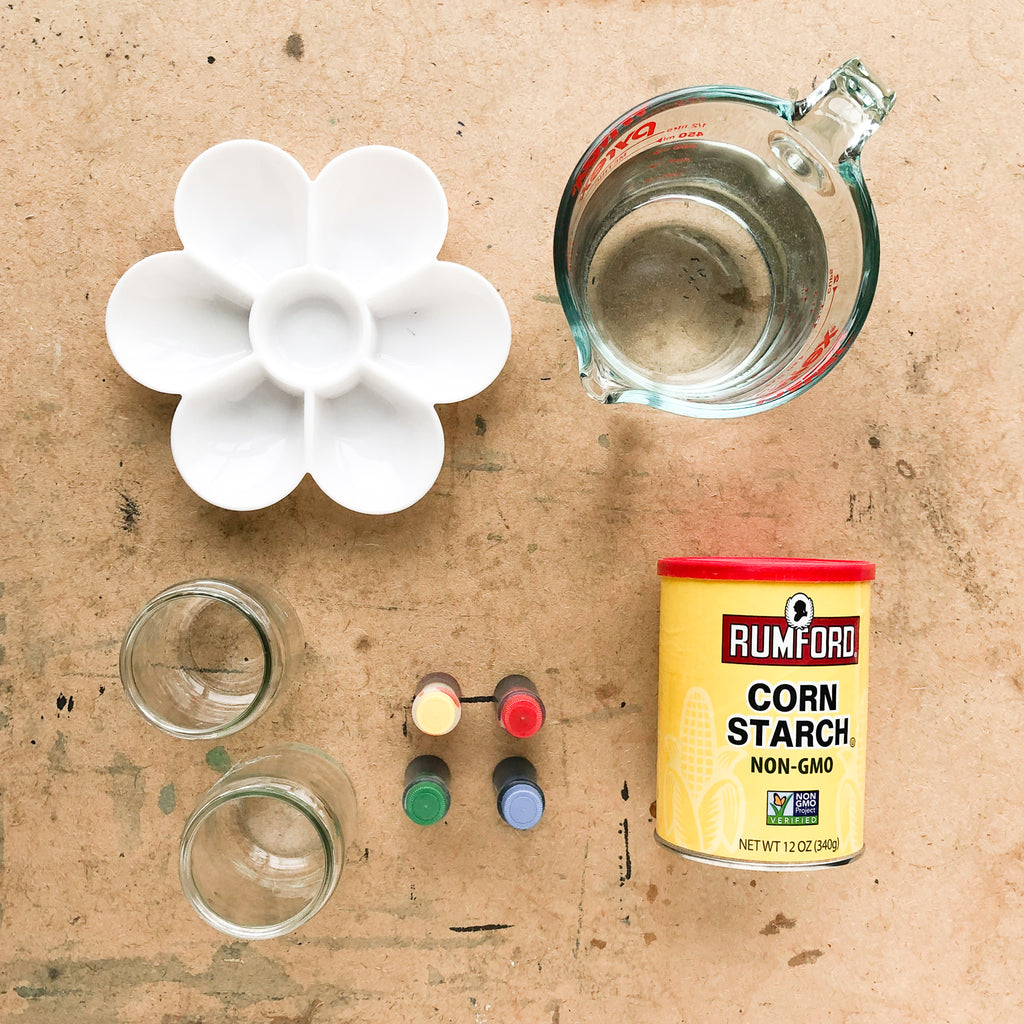
Here's what you need to make the finger paint:
- Cornstarch
- Water
- Food coloring
Here's what to do:
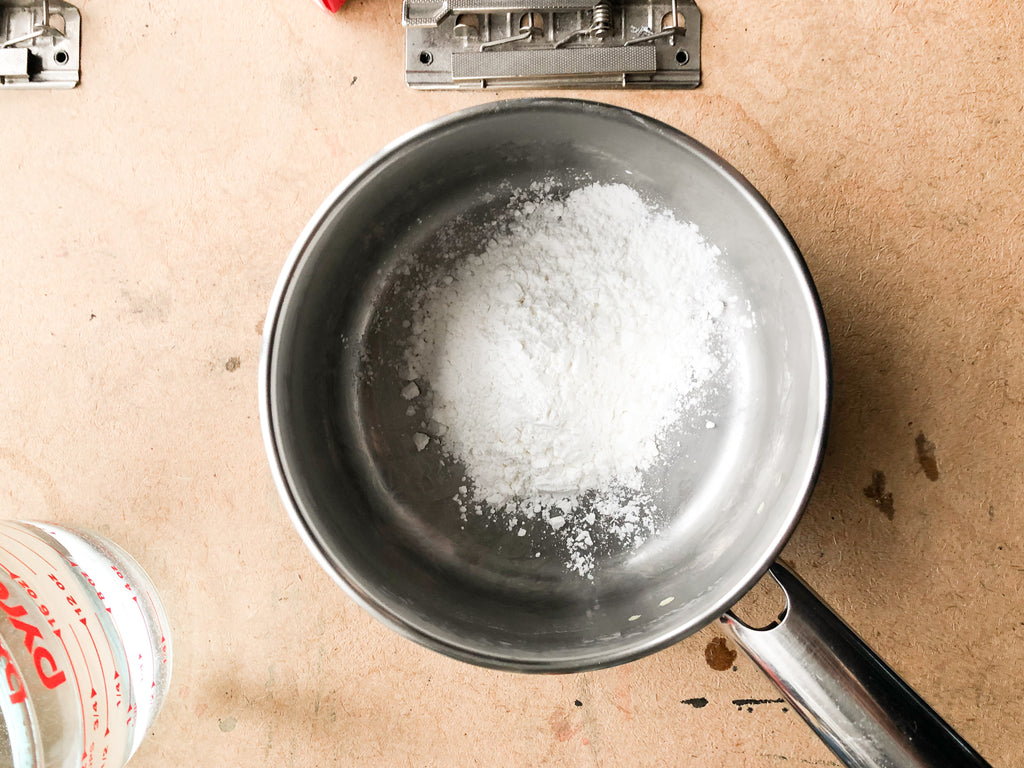
Put some cornstarch in a small saucepan. We used 3 tablespoons here.
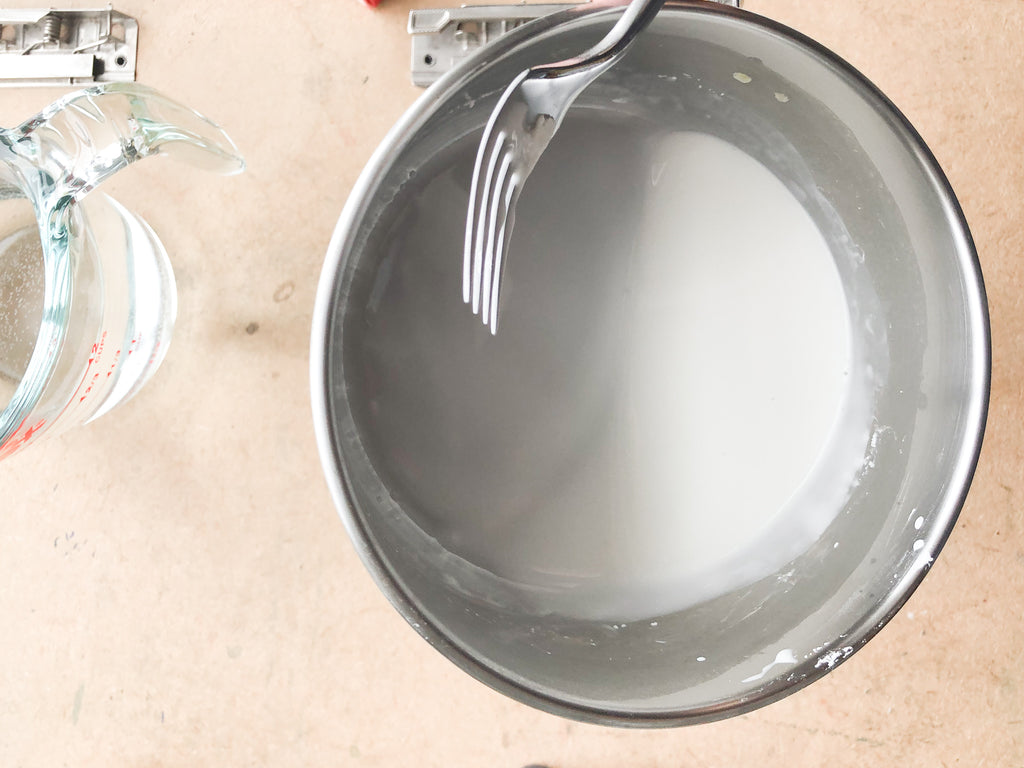
Mix a little room-temperature water into the cornstarch. Start with a tablespoon and see if you need to add more. Other recipes say to make a paste. All we could manage was a weird slimy glue-like mixture that was somehow solid and liquid at the same time, which was kind of cool. We stirred with a fork for a while to try to smooth it out the best we could.
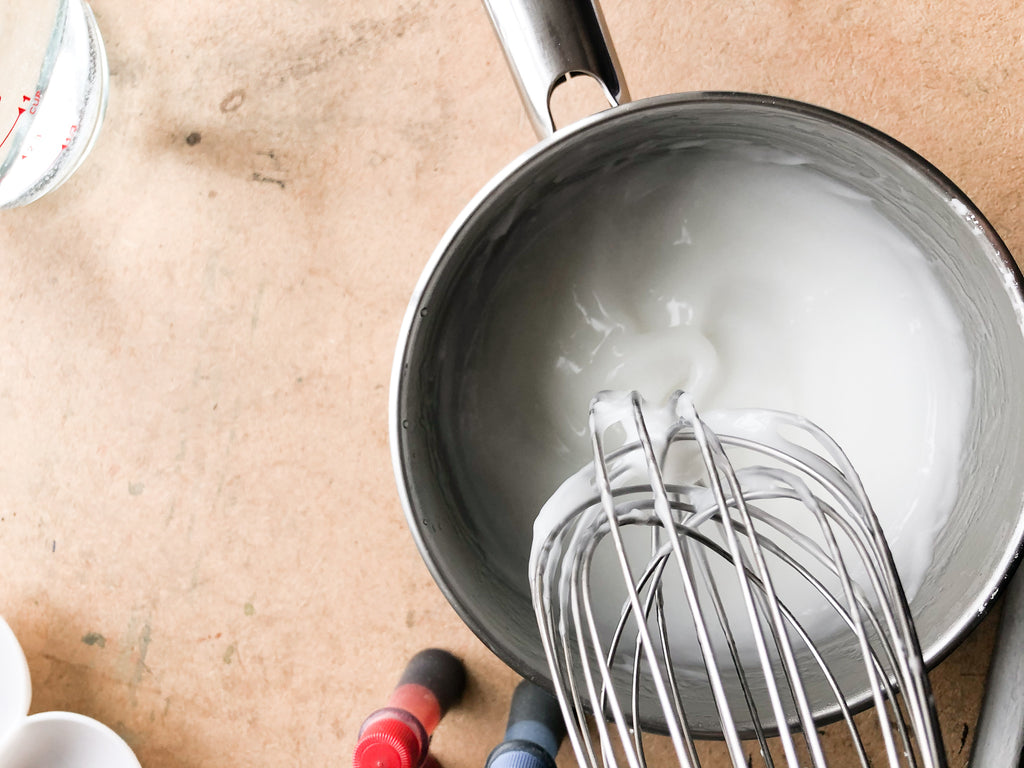
GROWN-UPS ONLY!!! DANGER!!! Boil a kettle of water and pour some boiling water, about a teacup's worth to start, into the saucepan with the cornstarch "paste." Whisk in the hot water. For us, the mixture turned into smooth goo almost immediately, so it was okay that our paste hadn't been very pasty. The mixture seemed very thick so we added a little more boiling water and whisked again until we had good thickness for finger paint. LET THE MIXTURE COOL FOR A FEW MINUTES! Wait until it's cool enough to handle.
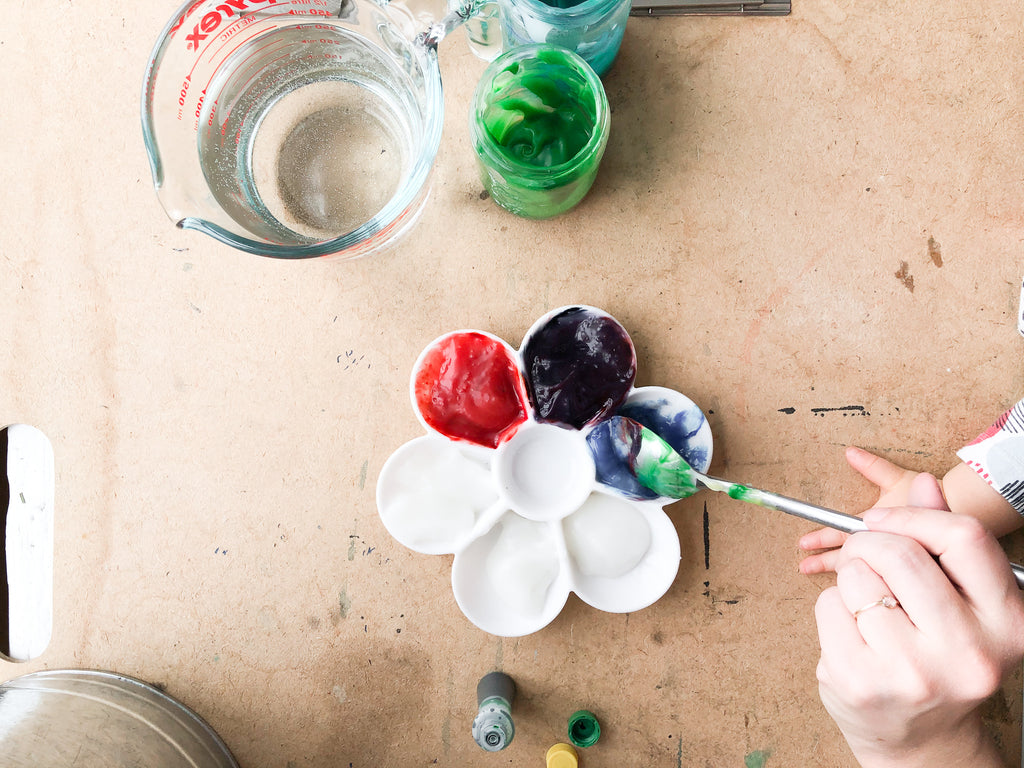
Now kids can participate again. Spoon the white mixture into separate little jars, palette cups, etc. Then stir in different combinations of food coloring to make different colors. It doesn't take much; we just used 2-4 drops of food coloring for each blob of paint.

We were trying to make interesting earth tones here. We might have been better off just making nice clean primary colors and mixing on the paper.
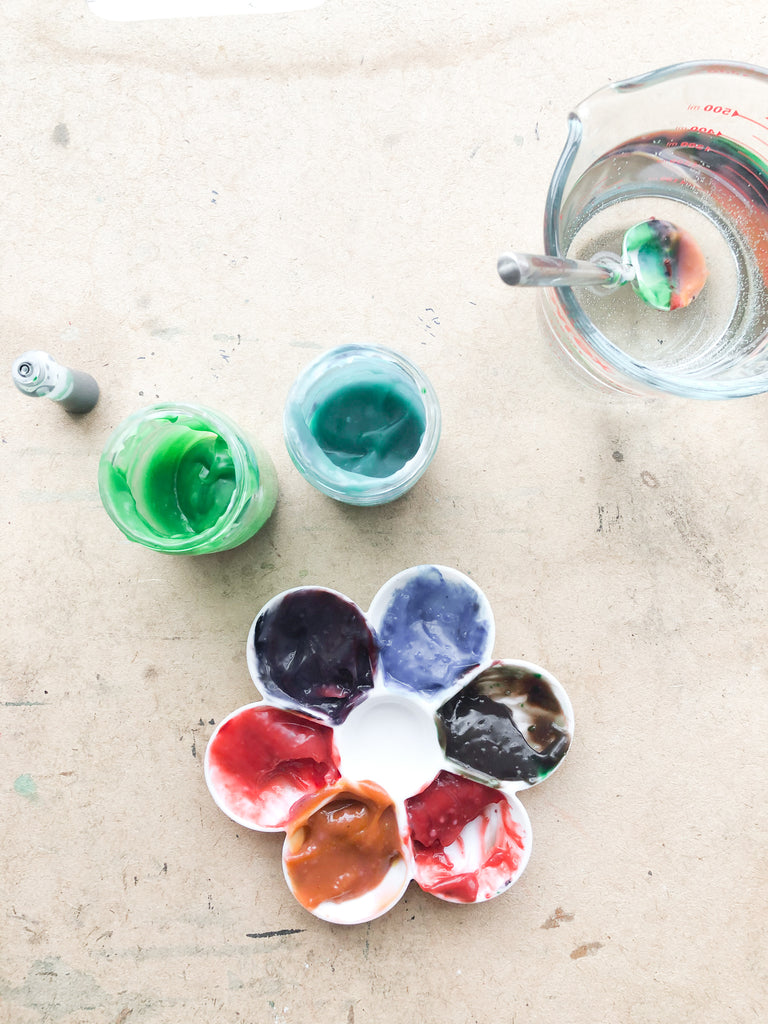
Now the paint is ready! Here are some usage notes for painters of different ages.
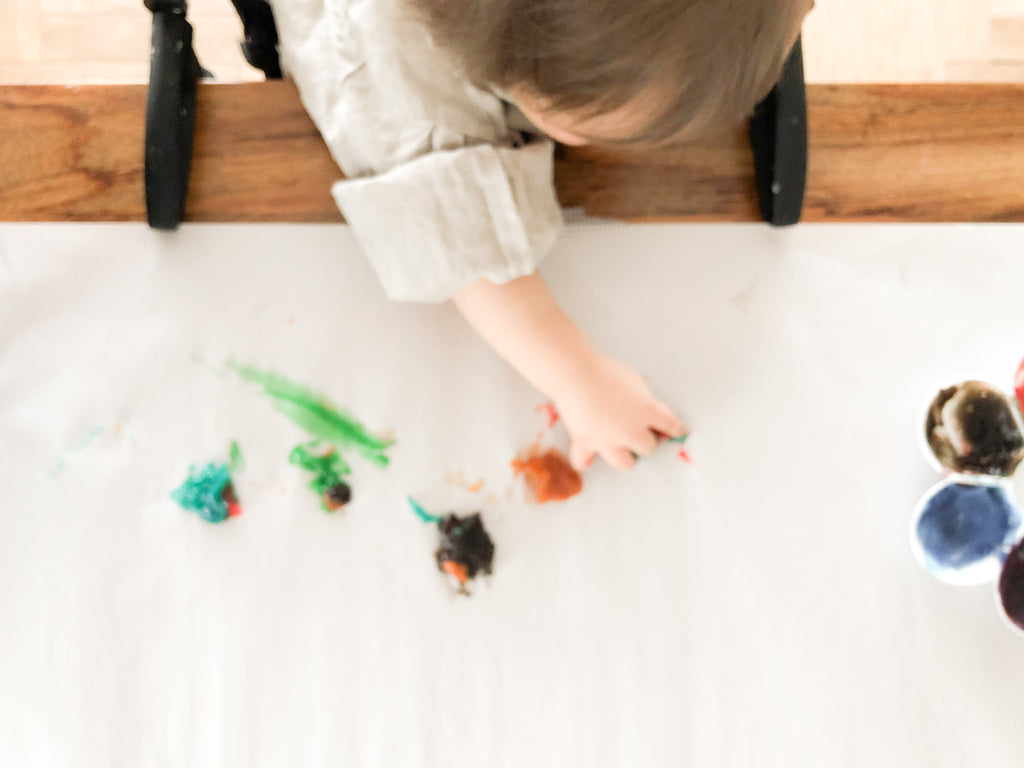
Some 13-month-olds don't care so much about making art yet, but they do love to eat any kind of paste or goo when they are sitting in their high chair. Live and learn. This paint doesn't taste like much, it just has a mildly unpleasant starchy flavor. It's only made of food ingredients so it's okay to eat a little, if that's what you're into.
Bigger babies and toddlers can play with the slimy paint and explore color mixing, and will generally be in their element.
If you want a more structured activity, you can create different blobs of color and make them into flowers by drawing stems. You could try to make flowers in all the colors of the rainbow. You could do a similar thing with butterfly wings.
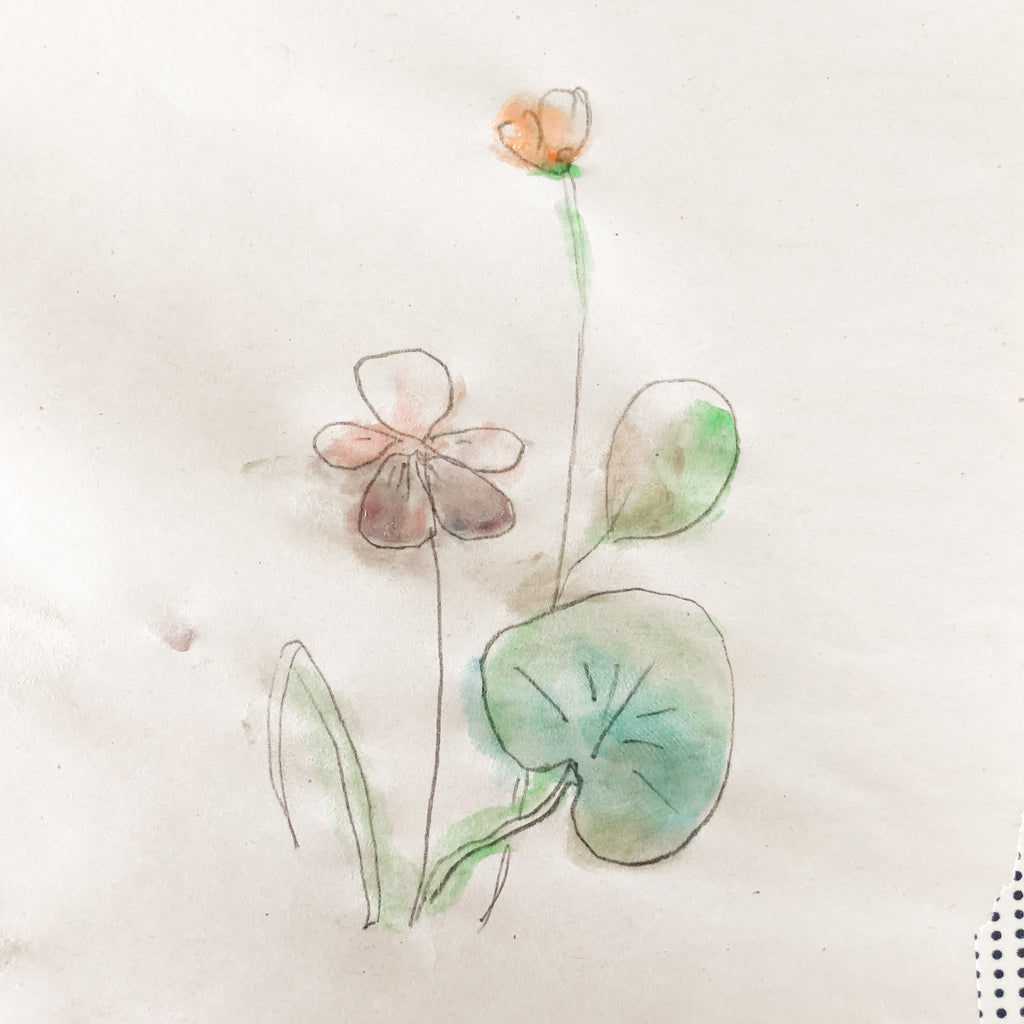
Big kids and grown-ups can draw real flowers or butterflies with a pencil, then use smudges of paint to make translucent washes of color. As you can see, Phoebe Fawn made this painting of a violet and a buttercup for her friend Lewis Toad. Lovely!
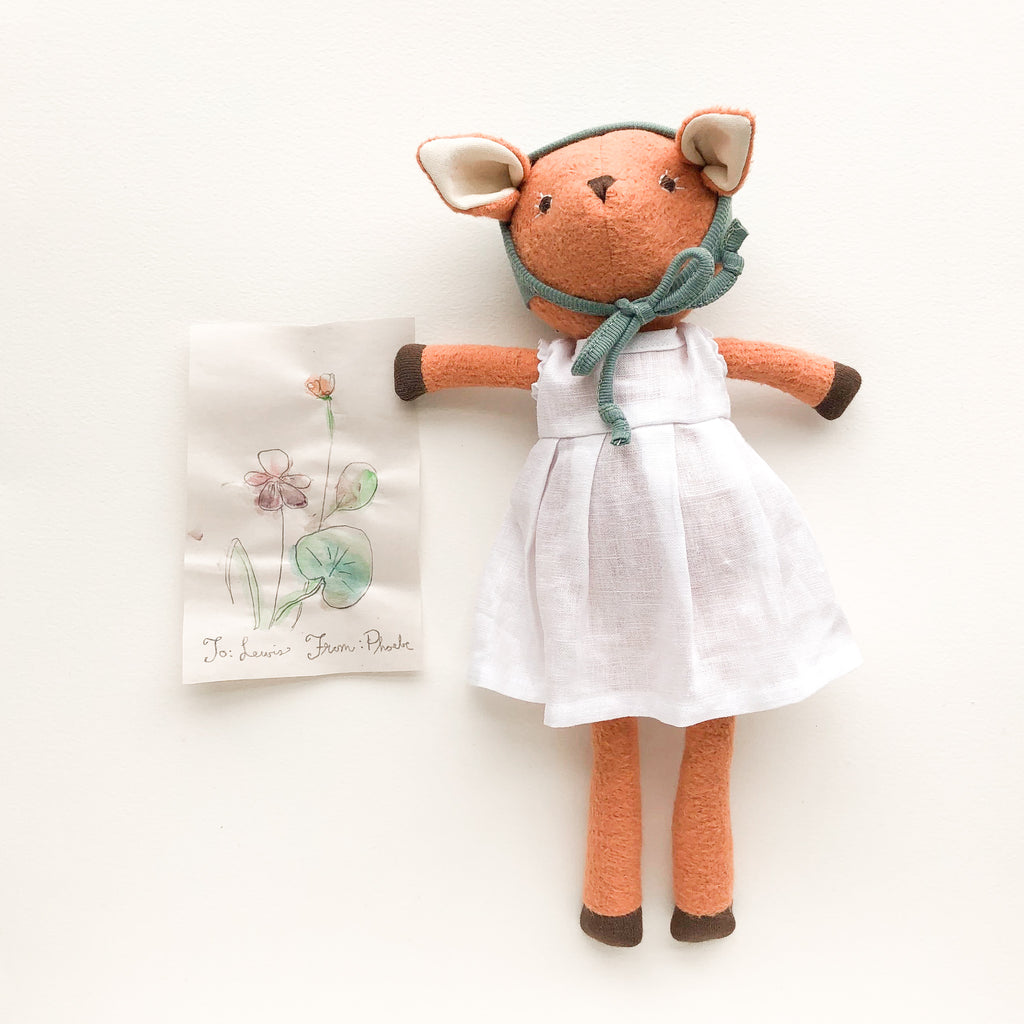
Some sources on the internet say this paint doesn't stain. We definitely got mild food coloring residue on our hands, and around our mouths if we were eating the paint. It probably would have been worse if we had used more drops of food coloring to make more strongly-colored paint. But we are washing our hands a lot these days, so I imagine the food coloring will wash off very soon. We haven't tested how the paint washes out of clothes or furniture, so we can't promise anything. Wear a smock.